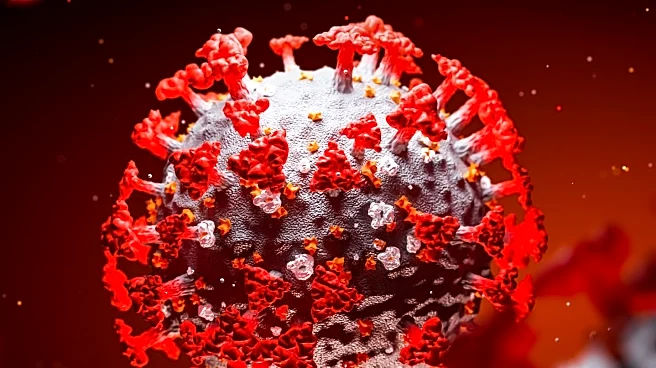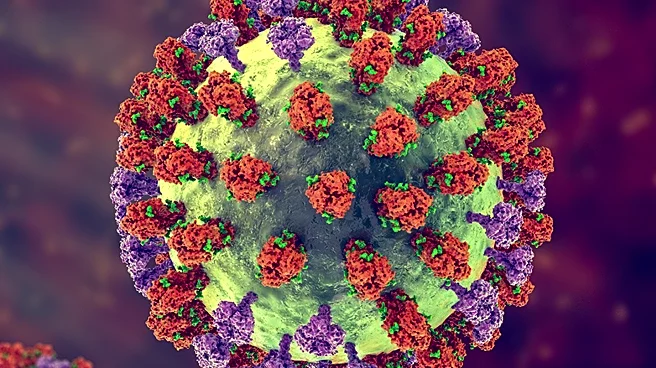What's Happening?
NanoViricides, Inc. is advancing its dual-track clinical development strategy for its broad-spectrum antiviral NV-387, targeting MPox and various respiratory viral infections. The company aims to address
unmet medical needs with NV-387, which binds and destroys virus particles in the blood. The strategy includes a Phase II trial for MPox in Congo, with potential funding from the US biodefense agency, BARDA. Additionally, a basket-type trial in India will assess NV-387's efficacy against flu, RSV, and coronaviruses, potentially leading to focused US trials. The company estimates significant market opportunities in RSV and influenza.
Why It's Important?
NanoViricides' approach to developing NV-387 could significantly impact the treatment of viral infections, offering a broad-spectrum antiviral solution. The dual-track strategy allows the company to address both biodefense applications and common respiratory infections, potentially leading to new treatment options. Success in clinical trials could position NanoViricides as a key player in antiviral drug development, with substantial market opportunities. The company's focus on safety and efficacy underscores the importance of rigorous clinical testing in bringing new therapies to market.
What's Next?
NanoViricides plans to initiate Phase II trials for NV-387, with the MPox trial potentially starting by late 2025 or early 2026. The respiratory viral diseases trial in India may begin in winter 2026, with subsequent US trials possible from 2027. The company will continue to seek regulatory approvals and funding opportunities to advance its clinical programs. The success of these trials could lead to expanded applications for NV-387 and further development of other antiviral candidates.
Beyond the Headlines
The development of broad-spectrum antivirals like NV-387 highlights the need for innovative approaches to combat viral infections. NanoViricides' use of nanotechnology to target viruses represents a promising avenue for drug development. However, the path to commercialization is fraught with challenges, including regulatory hurdles and the need for substantial investment. The company's focus on biodefense applications also underscores the importance of preparedness in addressing emerging viral threats.












